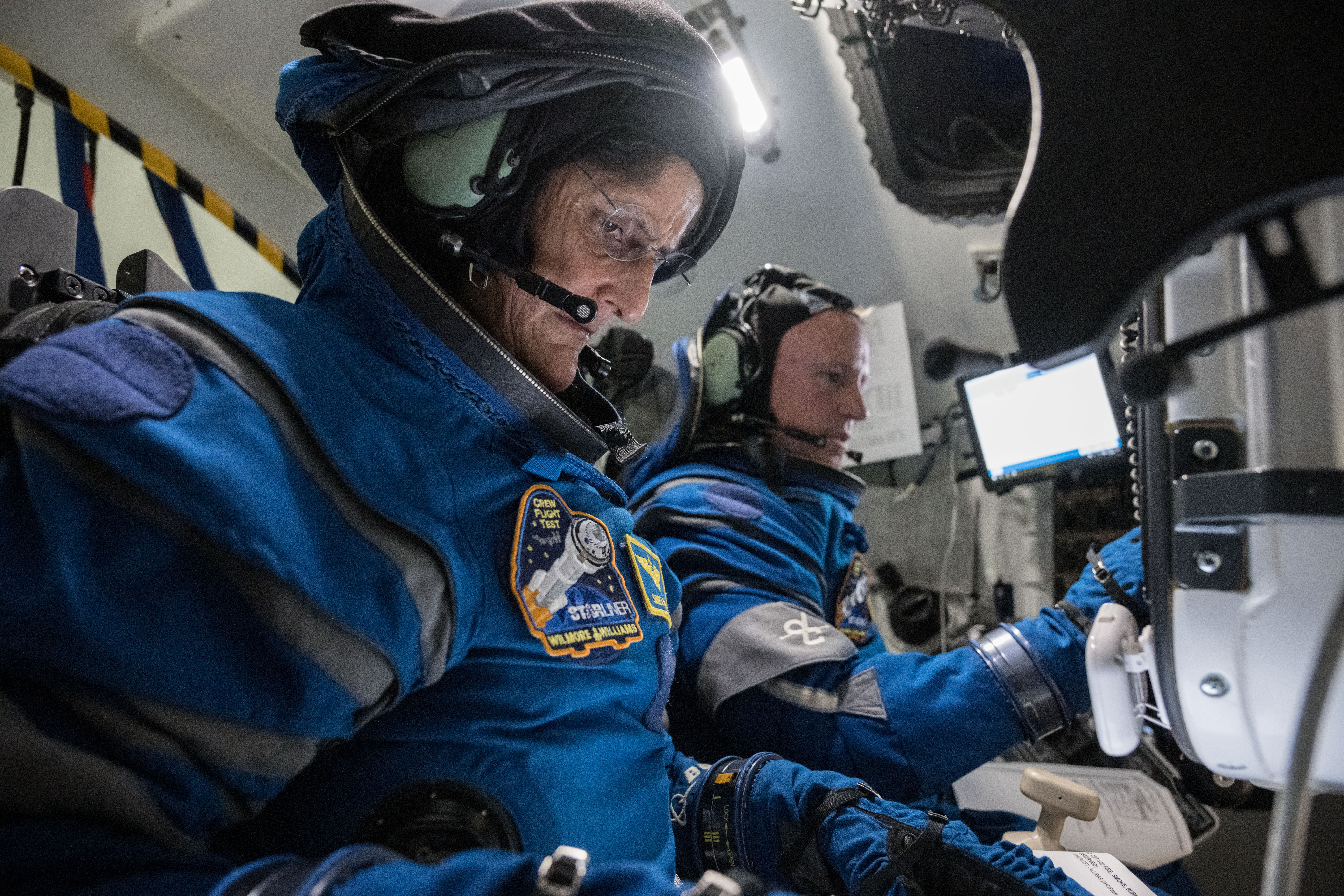
NASA, Boeing and United Launch Alliance (ULA) are targeting early May for the long-awaited Crew Flight Test (CFT) of the CST-100 Starliner spacecraft to the International Space Station (ISS). On Friday, senior NASA leaders and the two-person astronaut crew for CFT—veteran space travelers Barry “Butch” Wilmore and Suni Williams—outlined a mission that will remain at the station for a minimum of eight days and feature a wide range of engineering tests and evaluations to validate the new spacecraft ahead of Starliner-1, its first long-duration Post-Certification Mission (PCM) scheduled for early 2025.
Sixty-one-year-old Wilmore and 58-year-old Williams, both Navy captains, will be embarking on their third astronaut flights. “Hopefully the first of May” for launch, Wilmore quipped. “That’s our date.”
Selected into NASA’s Astronaut Corps in July 2000, Wilmore served as pilot on shuttle Atlantis’ STS-129 mission in November 2009 and commanded Expedition 42 during a six-month increment between September 2014 and March 2015. Across those two flights he accrued 178 days in space and over 25 hours of spacewalking time in four sessions of Extravehicular Activity (EVA). “A test pilot’s dream,” he said of CFT.
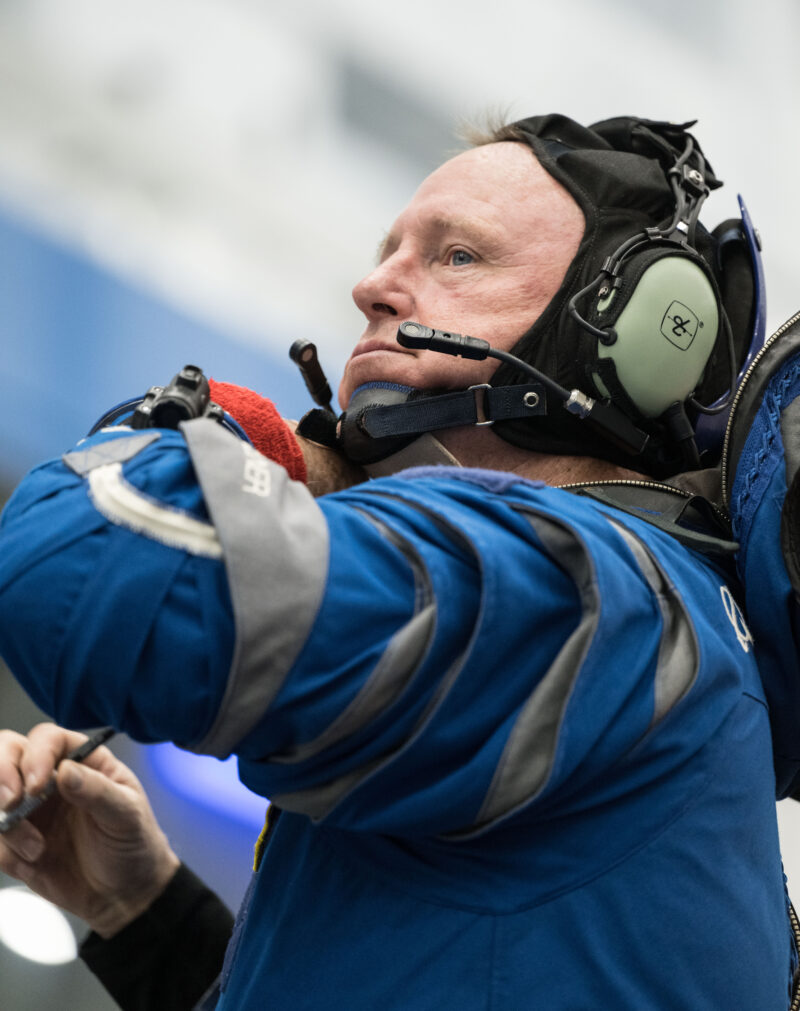
Williams, who entered the Astronaut Office in June 1998, logged a pair of long-duration ISS missions. She first launched aboard shuttle Discovery on STS-116 in December 2006 and remained aboard the station for six months, returning aboard Atlantis on STS-117 the following June after 195 days, eclipsing fellow NASA astronaut Shannon Lucid for the longest single space mission by a woman.
She commanded Expedition 33 during a four-month ISS increment between July and November 2012 and returned to Earth after accruing nearly 322 days in space and seven EVAs totaling more than 50 hours. “We are the tip of the spear,” said Williams, paying tribute to an enormous team that stands behind the crew.
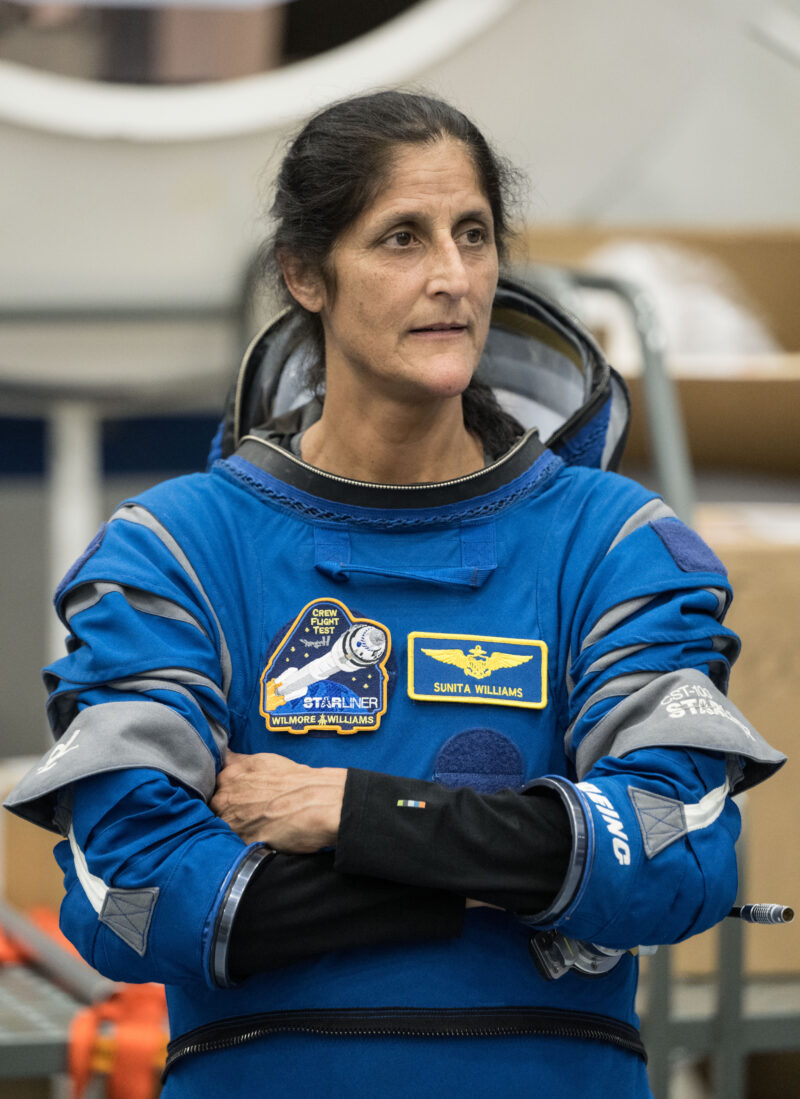
Earlier this month, ULA completed the initial build-up of its Atlas V launch vehicle—the Common Core Booster (CCB), a pair of Aerojet Rocketdyne-built AJ-60 boosters and the Dual-Engine Centaur (DEC) upper stage—for the CFT mission inside the Vertical Integration Facility (VIF) at storied Space Launch Complex (SLC)-41 at Cape Canaveral Space Force Station, Fla. Elsewhere, the Starliner spacecraft is undergoing fueling and will be mounted atop the stack in April.
Speaking earlier today, Starliner Flight Directors Mike Lammers and Ed Van Cise and ISS Flight Director Vincent LaCourt outlined the ambitious scope of the activities assigned to Wilmore and Williams during their upcoming mission. CFT is achievable in a minimum of eight “docked” days, with docking at the forward-facing port of the Harmony node anticipated about 25 hours after liftoff. However, Mr. Lammers explained that there exists “no hard constraint” on the flight’s duration, “nothing essentially limiting that”, and CFT can remain at the station for longer if orbital mechanics and landing and recovery weather in the Western United States so require.
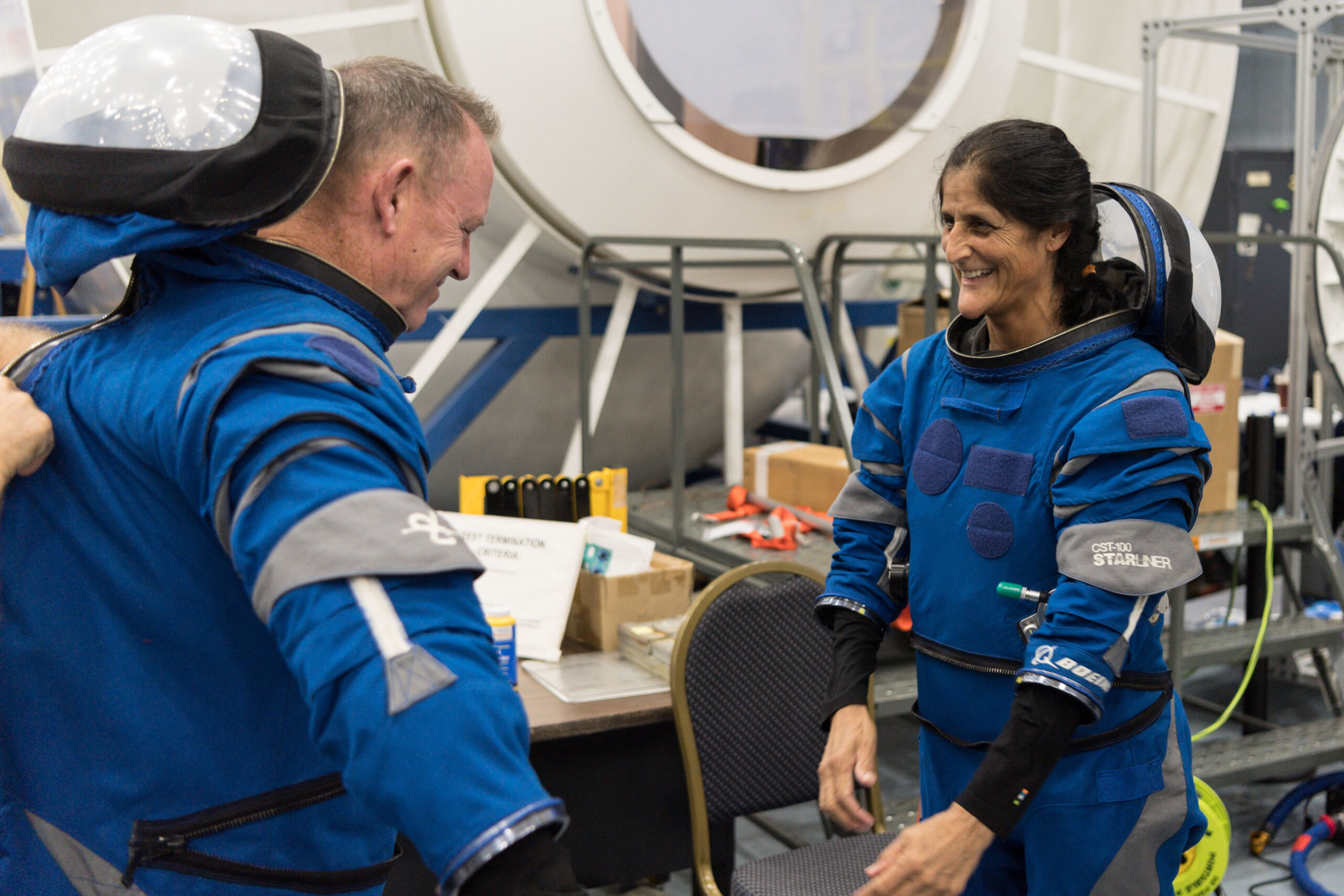
The Atlas V will be rolled out from the VIF to the SLC-41 pad surface about a day prior to launch for checkouts. Early on launch morning, Wilmore and Williams will be turned over to the Boeing team 4.5 hours before T-0, receiving a weather briefing and attending the suit-up room to don their “Boeing Blue” launch and entry suits.
In comments provided today, both astronauts spoke with great admiration for the new suits and both were full of praise for their comfort and dexterity. Wilmore joked about having a dream of being unable to find his helmet, an issue which matters not on CFT for the “soft” helmet is fully integrated into the back of the suit.
Wilmore and Williams will arrive at SLC-41 a little over two hours before launch and teams will load them aboard Starliner in a carefully choreographed campaign expected to take about an hour. The spacecraft’s hatch will be closed 80 minutes before liftoff and the closeout personnel will depart the pad at T-50 minutes.
Heading nearer to launch, Starliner will transition from external power to its on-board batteries at T-18 minutes and the Crew Access Arm (CAA) will retract at T-11 minutes. And inside the final four minutes of Terminal Count, the crew will perform a switch-throw at T-75 seconds—“LAS Arm to Auto”—as the Launch Abort System goes active.
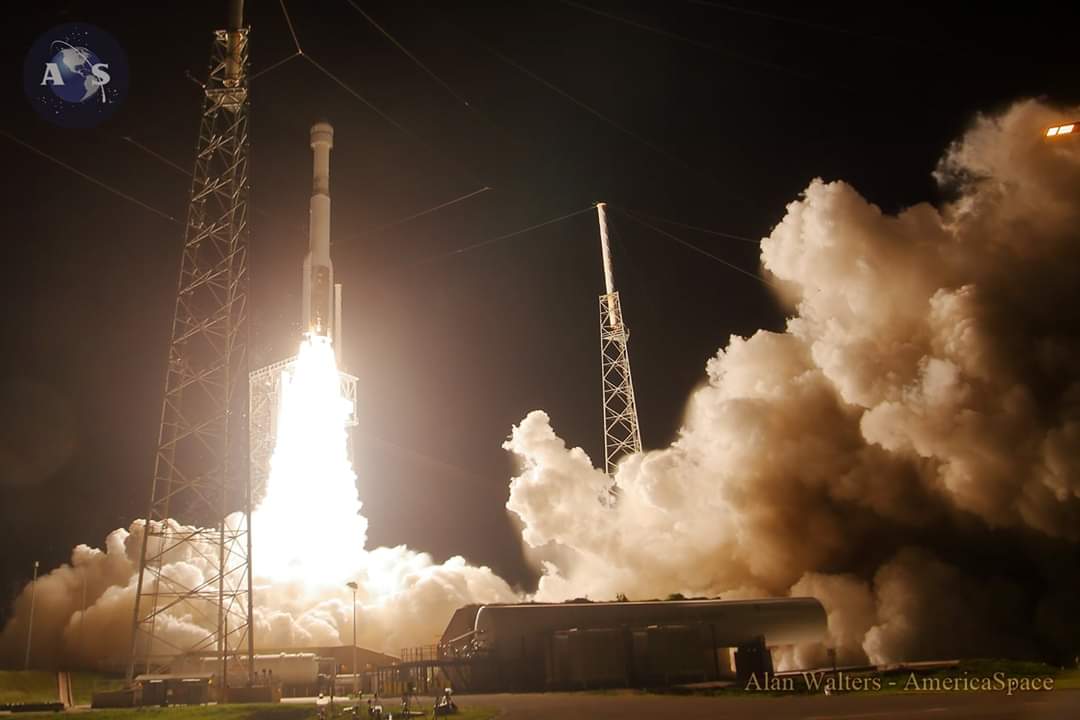
As well as marking the hundredth flight of the Atlas V since August 2002, CFT is the first time that humans have ridden an Atlas rocket since “Original Seven” Mercury astronaut Gordon Cooper flew the Faith 7 mission back in May 1963. Seconds after liftoff, Wilmore will be heard making the “Roll Program” call, straight off the pad, as the Mighty Atlas rolls onto the proper heading for insertion into low-Earth orbit.
Multiple abort options, from St. John’s, Newfoundland, to Shannon, Ireland, are available during ascent, as well as an Abort to Orbit (ATO) profile that enables Starliner—if needed—to burn its engines and limp into a low 120-mile-high (200-kilometer) orbit. After being boosted uphill by the Atlas V and Centaur upper stage, the spacecraft will separate from the stack and enter independent flight about 15 minutes after launch.
Wilmore and Williams will follow an approximately 25-hour-long, 16-orbit rendezvous profile to reach the ISS. During that time, the duo will be tasked with multiple test objectives, including manually repositioning the spacecraft, manually reacquiring Tracking and Data Relay Satellite System (TDRSS) assets, manually operating Starliner’s thrusters and a period of manual commanding in the vicinity of the space station itself.
After docking at Harmony’s forward port, and following pressurization and leak checks, hatches will open and Wilmore and Williams will be welcomed aboard the ISS by the seven-person Expedition 71 crew. An initial safety briefing and doffing of their Boeing Blue suits will kick off an ambitious minimum of eight docked days.
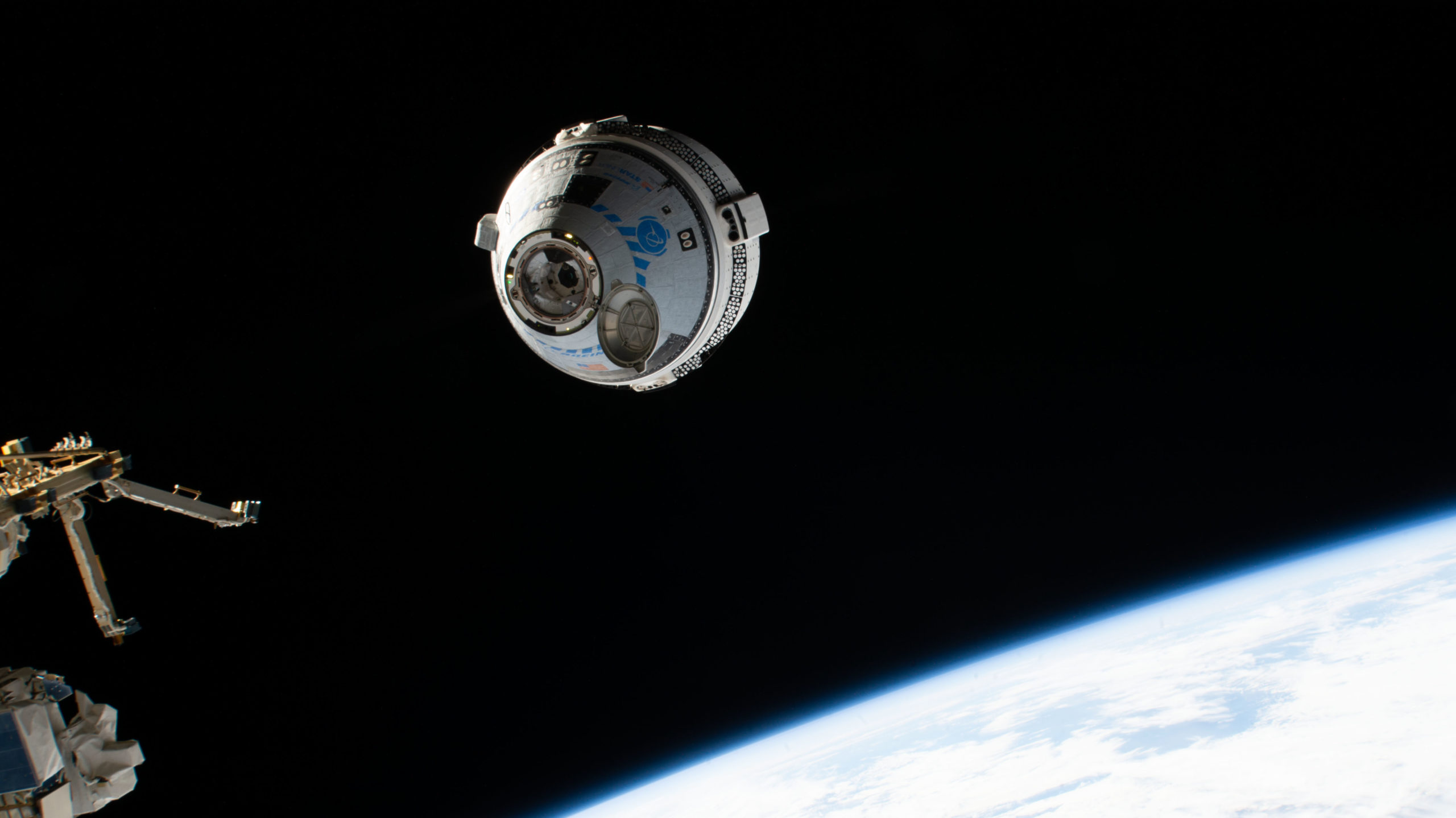
Several notable activities will occur during that tightly timelined period. The astronauts will perform a “Safe Haven” period of isolation inside Starliner to rehearse an emergency departure, power-up systems and perform checkouts as if for an imminent departure and complete pilot proficiency training in support of future long-duration crews.
Undocking is targeted to occur about 6.5 hours prior to landing, a little earlier than it would on an operational mission to enable Wilmore and Williams to do additional tests. CFT will perform a minute-long deorbit burn over the Pacific Ocean, with four landing zones—two areas at White Sands Space Harbor (WSSH) in New Mexico, plus Willcox Playa, Ariz., and Dugway Proving Grounds, Utah—available to the crew.
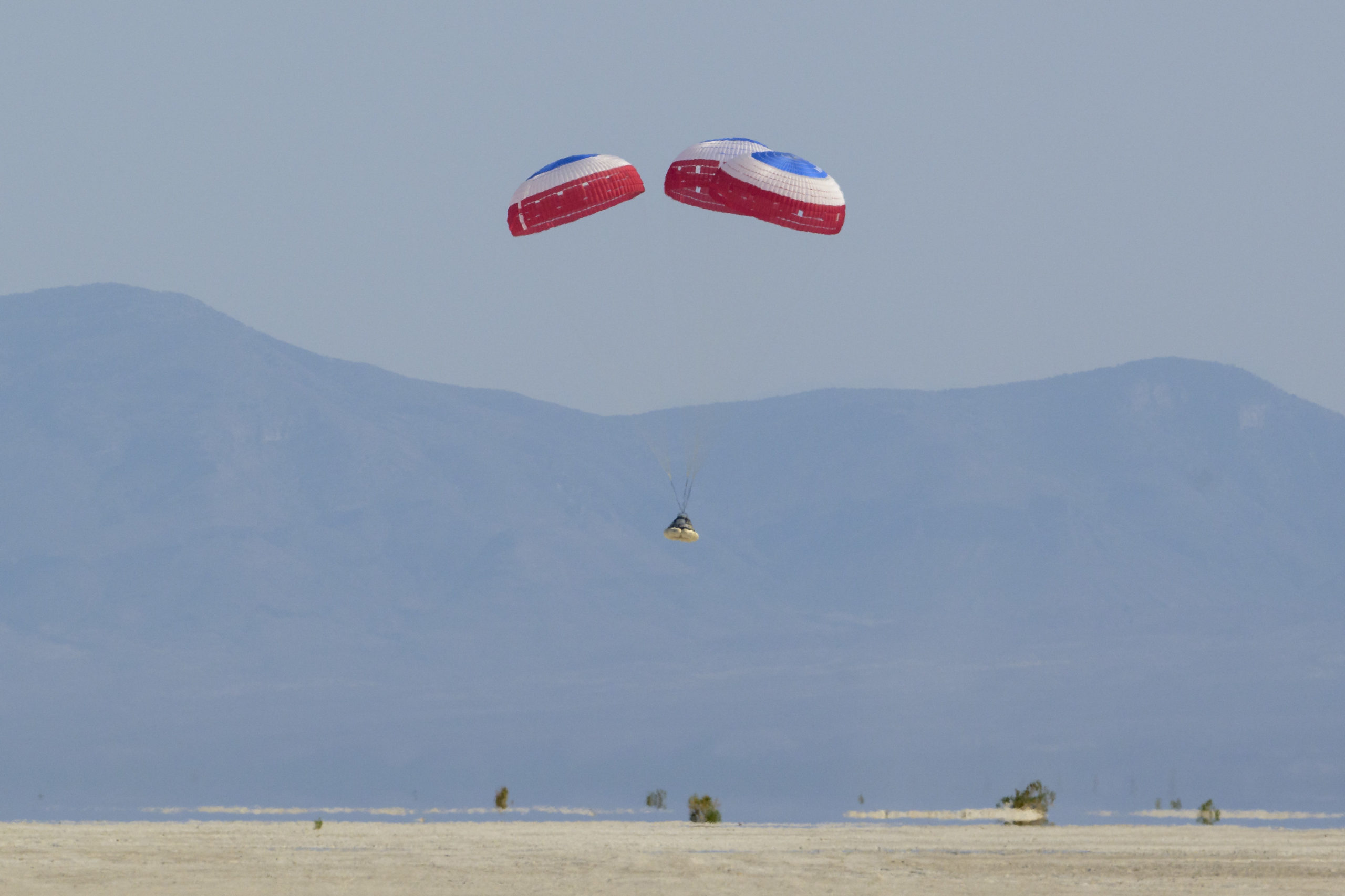
Starliner’s landing sequence will commence at an altitude of 30,000 feet (9,000 meters), with firstly a set of drogue parachutes and later the main canopies “reefed” at 8,000 feet (2,400 meters). Touching down under parachutes and airbags, Wilmore and Williams will be recovered from the spacecraft, helicoptered to a landing field and then flown back to NASA’s Johnson Space Center (JSC) in Houston, Texas.




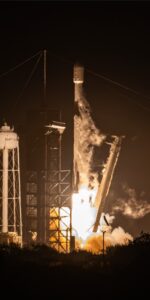
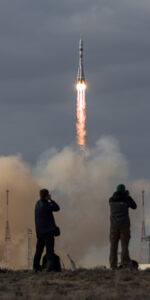
3 Comments
Leave a Reply3 Pings & Trackbacks
Pingback:Wilmore, Williams Arrive in Florida, Ahead of Historic Starliner Launch NET 6 May - AmericaSpace
Pingback:Wilmore, Williams Arrive in Florida, Ahead of Historic Starliner Launch NET 6 May | Musk News
Pingback:Wilmore, Williams Arrive in Florida, Ahead of Historic Starliner Launch NET 6 May - SPACERFIT